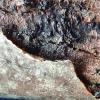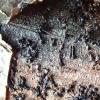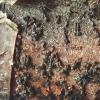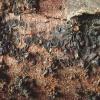
31-12-2023 16:14
Karl Soler KinnerbäckThis discomycete was found on a decorticated branc

11-01-2024 23:16
Studying three ascomata from a suspected Mollisia

12-01-2024 18:01
 Viktorie Halasu
Viktorie Halasu
Hello, I'm looking for this book, would anyone kn

11-11-2023 00:15
 Björn Wergen
Björn Wergen
Dear friends,In Balderschwang, near the border of

02-10-2023 21:01
Nihad OmerovicHello,30. 09. 2023., Mediterranean region, nex to

10-01-2024 17:28
Margot en Geert VullingsOn decayed birch on the ground we saw these very s

09-01-2024 18:56
Margot en Geert VullingsWe found these yellow discs on a pine cone and the

06-01-2024 20:49
 Hardware Tony
Hardware Tony
Recently found a gergarious group of what appears
Calosphaeria ?
Pierre Repellin,
12-12-2023 11:18
Trouvé le 04-12-2023, à Méaudre (38); alt.1000 m, sur une branche morte de noisetier en cre rattachée à l'arbre:
- Périthèces noirs immergés sous l'écorce, pour la plupart en groupes circulaires avec de longs cols tournés vers l'intérieur, mais aussi quelques uns isolés.
- Entre les asques, et les dépassant largement, les hyphes ressemblent à des paraphyses.
- Asques octosporés.
- Ascospores lisses, allantoïdes, 7-10 x 1-2,5 µm, non septées.
D'après ce que j'ai pu trouver sur Dennis et sur Ellis & Ellis, Cela rappelle beaucoup Calosphaeria wahlenbergii (Desm.)Nitischke; mais cette espèceest notée sur bouleau et parfois sur Fagus.
J'ai vu qu'il existait une espèce se développant sur noisetier (Calosphaeria corylina Nitschke), mais je n'ai trouvé aucun document la concernant.
C'est vrai que le bouleau et le noisetier appartiennent à la même famille
Quelqu'un aurait-il d'autres éléments pour confirmer ou infirmer cette détermination.
Un grand merci d'avance pour l'aide.
Pierre R.
Pierre Repellin,
13-01-2024 17:47
Re : Calosphaeria ?
Bonjour,
Déjà envoyée il y a quelque temps mais, malheureusement restée sans réponses, j'apporte quelques compléments à cette récolte:
- pas de stroma visible.
- périthèces noirs, immergés sous l'écorce, en groupes circulaires pour la plupart (quelques uns sont isolés), avec de longs cols fins, cylindriques tournés vers l'intérieur du cercle.
- Les sommets des cols apparaissent à l'extérieur érumpant l'écorce.
- entre les asques et les dépassant largement, les hyphes font penser à des paraphyses (ou ce sont réellement des paraphyses ?).
- asques en massue, partant d'une base commune (certains apparaissent capités), octosporés, (40-46 x 4,5-6 µm).
- ascospores lisses, allantoïde, non septées [(6-) 7-9 x 1-1,5 (-2) µm]
Ressemble beaucoup à Calosphaeria wahlenbergii (Desm.) Nitschke qui est noté sur Betula et, parfois, sur Fagus (DENNIS, ELLIS & ELLIS).
Calosphaeria corylina Nitschke a des ascospores plus grandes 9-11,5 x 1,7-2,3 µm).
Quelqu'un aurait-il une idée ?
Merci d'avance.
Pierre R.
Déjà envoyée il y a quelque temps mais, malheureusement restée sans réponses, j'apporte quelques compléments à cette récolte:
- pas de stroma visible.
- périthèces noirs, immergés sous l'écorce, en groupes circulaires pour la plupart (quelques uns sont isolés), avec de longs cols fins, cylindriques tournés vers l'intérieur du cercle.
- Les sommets des cols apparaissent à l'extérieur érumpant l'écorce.
- entre les asques et les dépassant largement, les hyphes font penser à des paraphyses (ou ce sont réellement des paraphyses ?).
- asques en massue, partant d'une base commune (certains apparaissent capités), octosporés, (40-46 x 4,5-6 µm).
- ascospores lisses, allantoïde, non septées [(6-) 7-9 x 1-1,5 (-2) µm]
Ressemble beaucoup à Calosphaeria wahlenbergii (Desm.) Nitschke qui est noté sur Betula et, parfois, sur Fagus (DENNIS, ELLIS & ELLIS).
Calosphaeria corylina Nitschke a des ascospores plus grandes 9-11,5 x 1,7-2,3 µm).
Quelqu'un aurait-il une idée ?
Merci d'avance.
Pierre R.




















